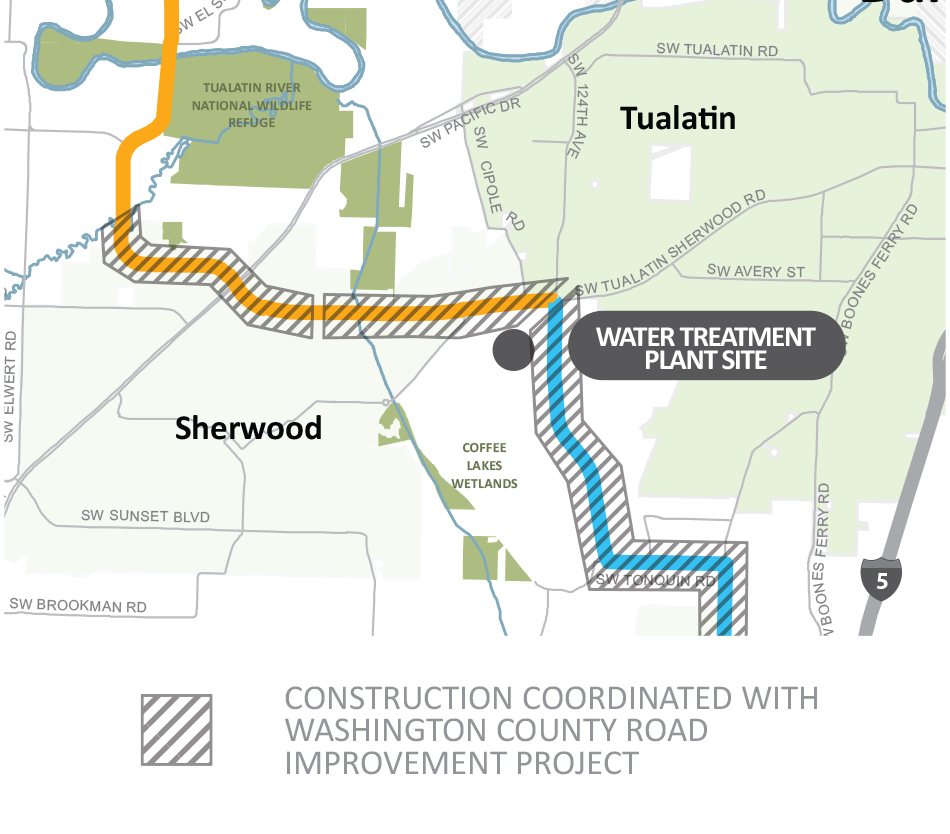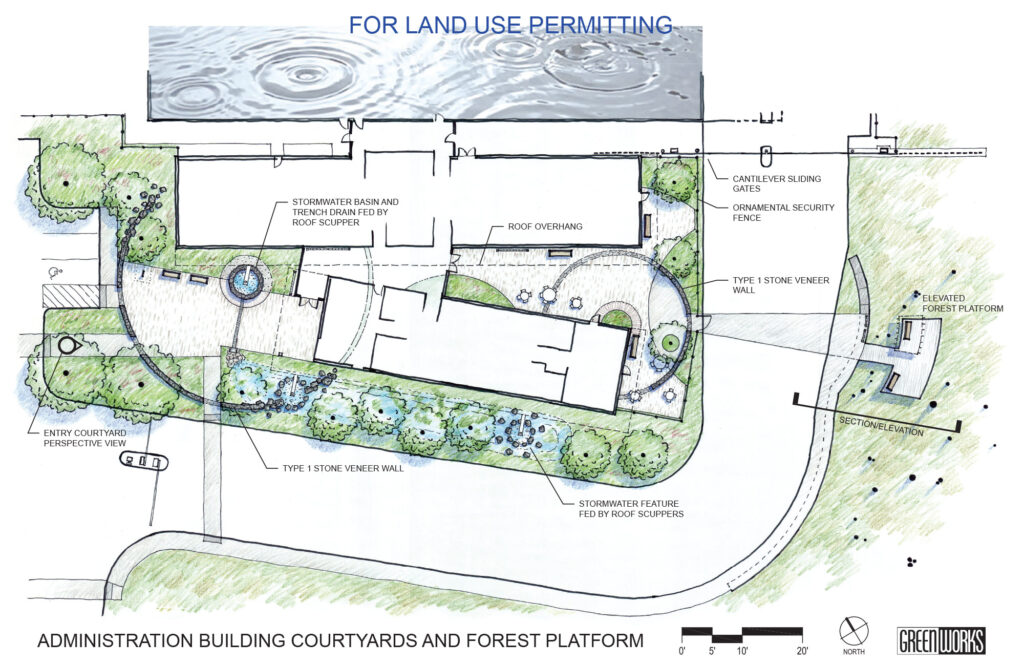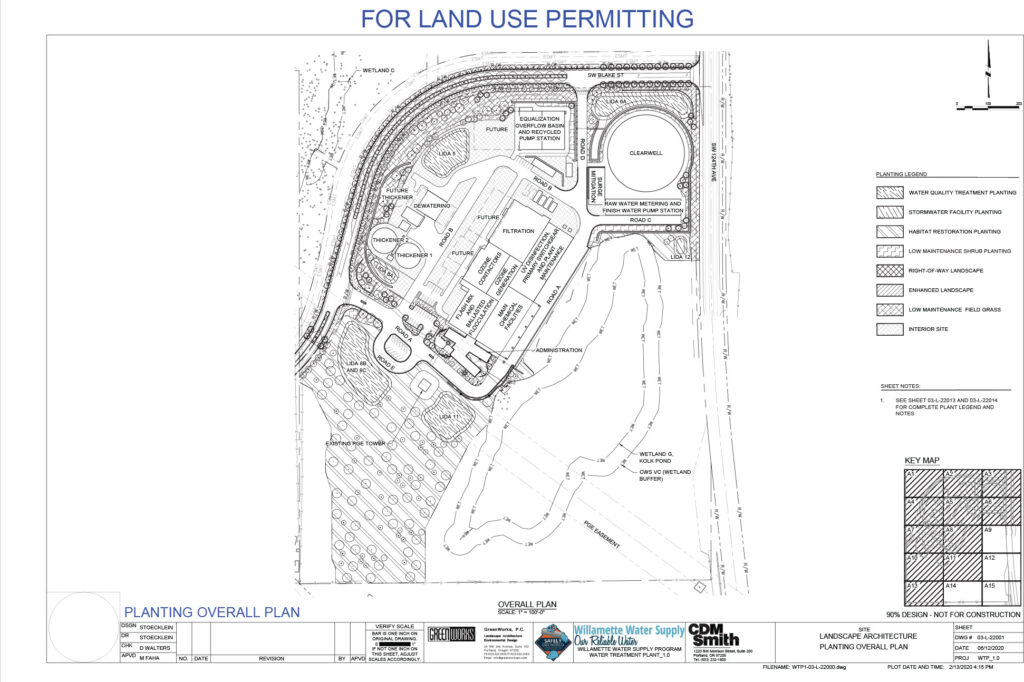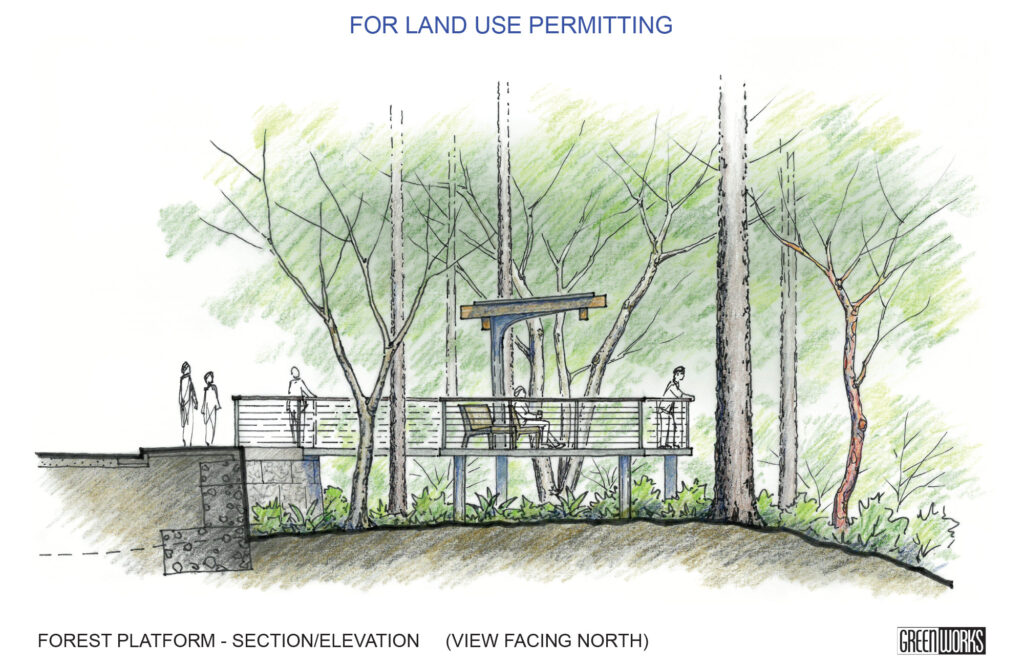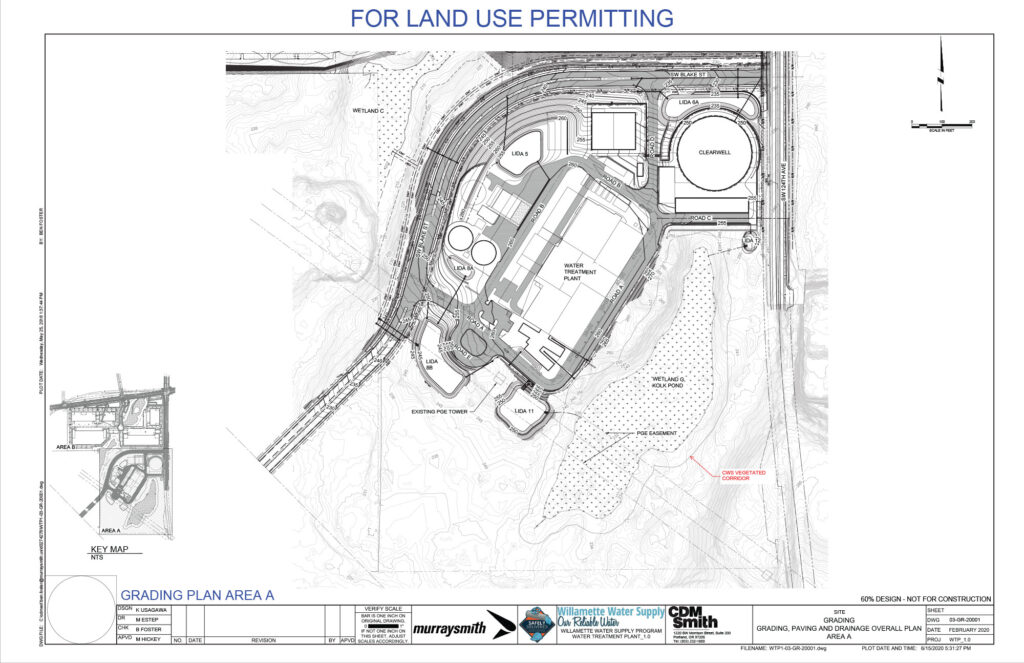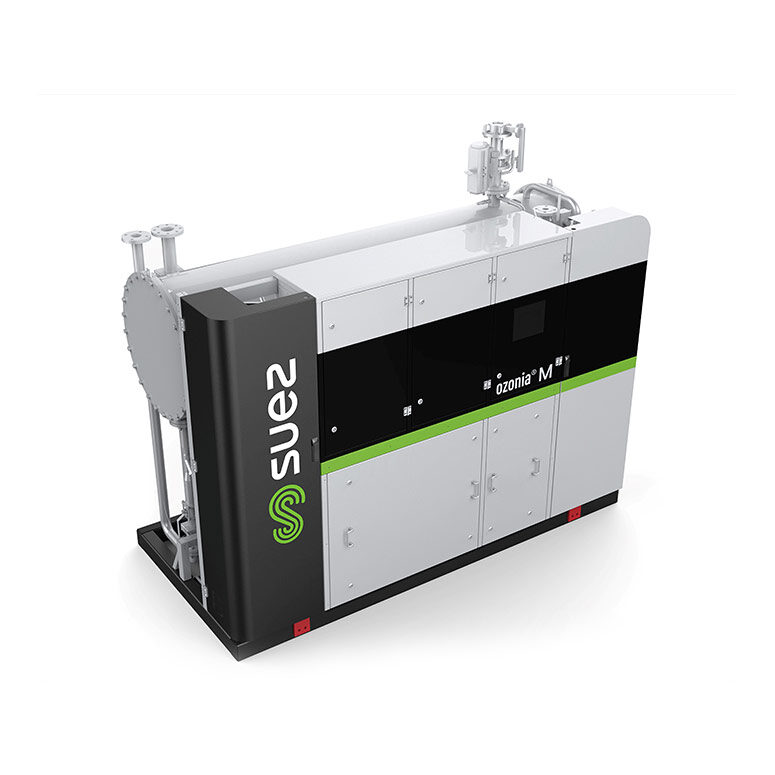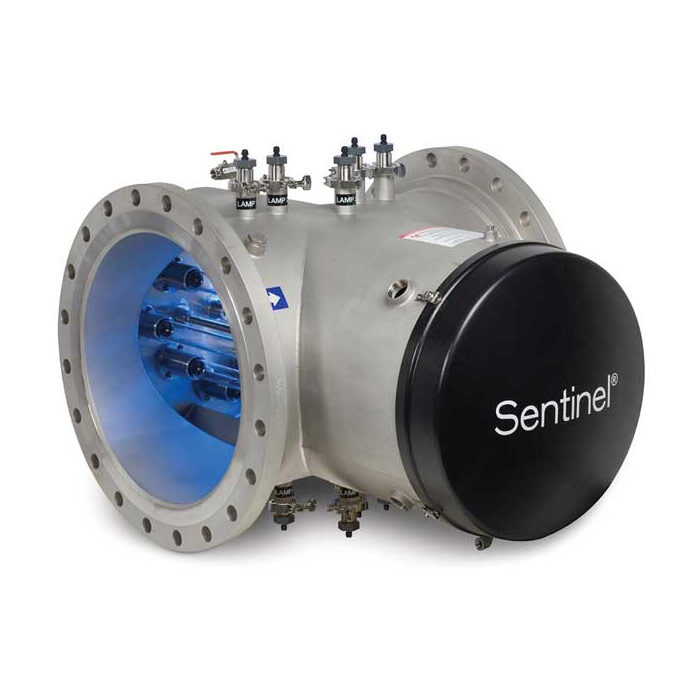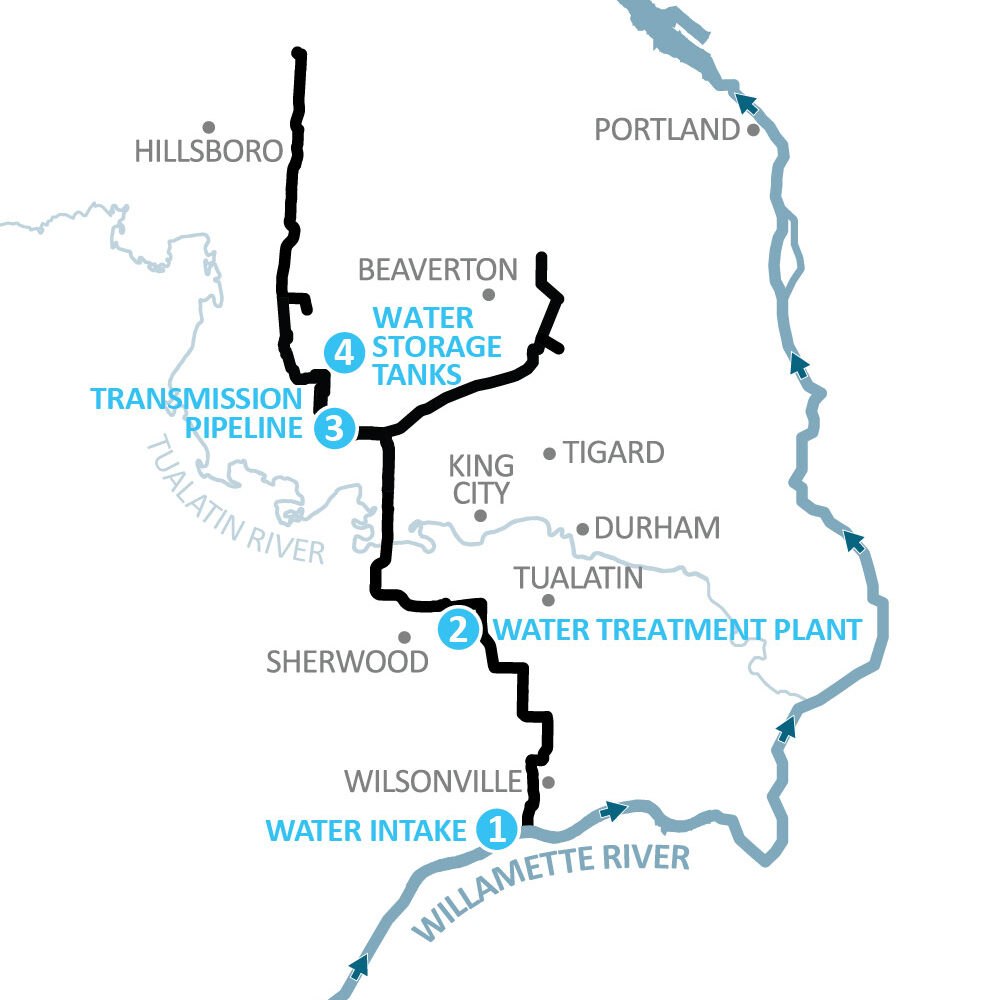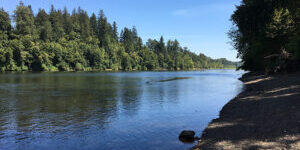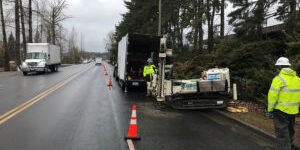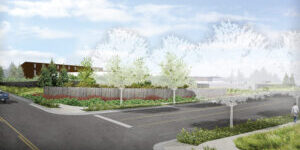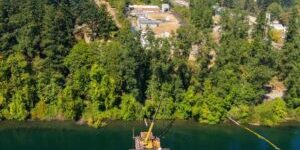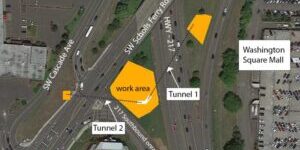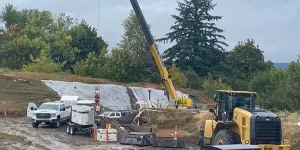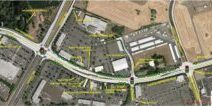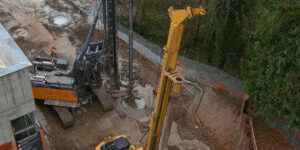Construction Underway
Construction is more than 20 percent complete on the WTP_1.0 Project. At the height of construction, about 300 workers that represent hundreds of local and regional businesses will provide the skills and expertise to complete the work. Dozens of other companies will provide the goods and materials to support the effort.
Plant Location and Capacity
Construction of a new, seismically resilient water treatment plant (WTP) is essential to the new water system. It will be located in the Tonquin Employment Area near the intersection of SW 124th Avenue and SW Tualatin-Sherwood Road. The site is within the Urban Growth Boundary and the City of Sherwood. Visit the WTP_1.0 Procurement page for information on business opportunities.
The new WTP will initially produce up to 60 million gallons of water per day (mgd) but will be designed for a maximum of 120 mgd.
In addition to playing a critical role in improving the region’s ability to recover after a large earthquake, other benefits include:
- Improving travel for the public—by building a new east-west road crossing 124th Avenue that connects Tualatin and Sherwood
- Enhancing emergency preparedness—by creating an emergency facility capable of producing drinking water for emergency responders and the community within 48 hours of a major seismic event
- Providing educational opportunities—through a public overlook of a preserved natural area, and other educational features
Water Treatment Process
Steps for the new state-of-the-art treatment plant will include enhanced coagulation sedimentation, ozone and ultraviolet treatment, granulated activated carbon filtration, sand filtration, and chlorine disinfection (learn more here).
Ozonation
Use of ozone serves multiple functions including breaking down of organic chemicals and taste/odor causing compounds; enhances removal of organic material, and can contribute to disinfection of bacteria, viruses, and Giardia. Ozone gas is dissolved into the water to treat contaminants, and any unreacted ozone is converted back to oxygen.
Ozone will be produced onsite combining nitrogen and oxygen and electrically charging the mixture in a specialized machine to produce ozone. Three Veolia (formerly Suez) Ozone Generators will be used at the site, with each generator capable of producing 495 pounds of ozone per day.
Ozone gas from the generators is dissolved into the water in a large, covered basin that provides extended reaction time as the water moves slowly through the basin in a serpentine path.

